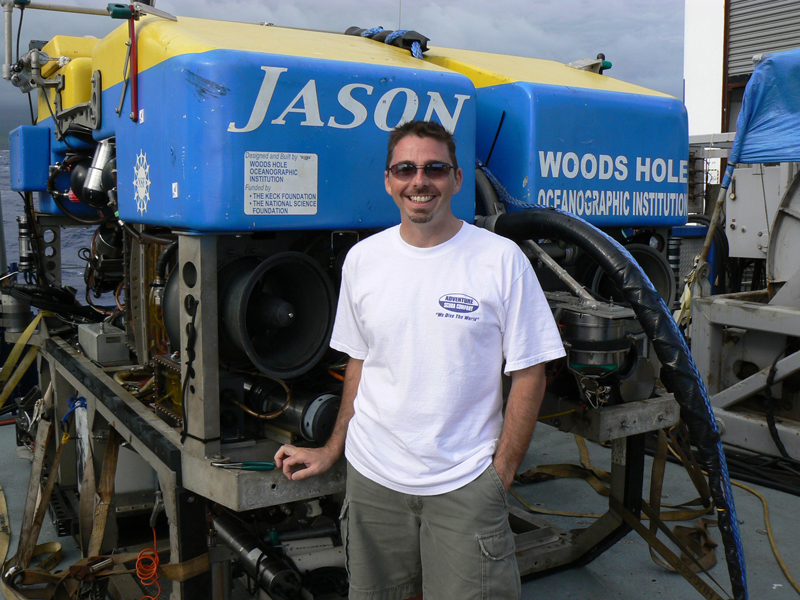 My research has focused on creating and developing various genetic based diagnostic and research tools and protocols. As a Senior Biologist with Department of Bacteriology at the American Type Culture Collection (ATCC) (Manassas, VA), my research was in environmental microbiology, genetic based technologies, and biochemical assays to investigate the roles of micro-organisms in groundwater systems, the rhizosphere of wetland plants, as well as deep sea hydrothermal vent systems. More recently I began to apply these techniques to study the bio-corrosion and preservation of historical shipwrecks and submerged archaeological aircrafts in marine environments. My focus is to promote underwater field studies, sampling, and site assessments in conjunction with molecular biological analysis. I have conducted the investigations of bio-corrosion samples from archaeological sites located in the Chesapeake Bay including the U-1105 submarine and STC-410 tank barge. Additionally, I conducted similar molecular genetic and microbiological studies associated with the corrosion of submerged WWII aircraft from the Marshall Islands, and more recently the U.S.S. Monitor. I have been successful in formulating collaborative projects with the Naval Historical Center, Department of the Navy; the Maryland Historical Trust; Center for Maritime Archaeology and Conservation (CMAC, Texas A & M University); the Mariners’ Museum (Newport News, Virginia) and the Institute of Maritime History (IMH). These efforts have resulted in the establishment of the Archaeo-Genomics Laboratory at CMAC (AGL-CMAC), where I serve as a Project Manager for similar projects. Currently working full time in the scuba industry, I am also involved with course development directed towards underwater archaeological and scientific diving techniques.
My research has focused on creating and developing various genetic based diagnostic and research tools and protocols. As a Senior Biologist with Department of Bacteriology at the American Type Culture Collection (ATCC) (Manassas, VA), my research was in environmental microbiology, genetic based technologies, and biochemical assays to investigate the roles of micro-organisms in groundwater systems, the rhizosphere of wetland plants, as well as deep sea hydrothermal vent systems. More recently I began to apply these techniques to study the bio-corrosion and preservation of historical shipwrecks and submerged archaeological aircrafts in marine environments. My focus is to promote underwater field studies, sampling, and site assessments in conjunction with molecular biological analysis. I have conducted the investigations of bio-corrosion samples from archaeological sites located in the Chesapeake Bay including the U-1105 submarine and STC-410 tank barge. Additionally, I conducted similar molecular genetic and microbiological studies associated with the corrosion of submerged WWII aircraft from the Marshall Islands, and more recently the U.S.S. Monitor. I have been successful in formulating collaborative projects with the Naval Historical Center, Department of the Navy; the Maryland Historical Trust; Center for Maritime Archaeology and Conservation (CMAC, Texas A & M University); the Mariners’ Museum (Newport News, Virginia) and the Institute of Maritime History (IMH). These efforts have resulted in the establishment of the Archaeo-Genomics Laboratory at CMAC (AGL-CMAC), where I serve as a Project Manager for similar projects. Currently working full time in the scuba industry, I am also involved with course development directed towards underwater archaeological and scientific diving techniques.
Areas of Expertise
- Application of molecular and biological methods to study bio-corrosion
- Training and course development for scientific diving
Current Position
- General Manager of Adventure Scuba Company, Chantilly, Virginia
- Project Manager for AGL-CMAC, Texas A&M University
Current Projects
- Archaeo-Genomics Laboratory (AGL-CMAC)
Education
- M.S. Biology, George Mason University, Fairfax, VA., January 1998
- B.S. Biology, Mary Washington University, Fredericksburg, VA., May 1991
Professional Activities
- Project Manager for AGL-CMAC, Texas A&M University
- NAUI Instructor
IMH Projects
- Course development for limited visibility and entanglement scuba training 2008, 2009
- Molecular survey for iron-oxidizing bacteria on U-1105 and STC-410. 2006
Selected Publications
- Plaia TW and Emerson DE. (2006). An undisclosed envIRONment: Formation and Distribution of Iron-Oxidizing Bacteria in the Chesapeake Bay. The Institute for Maritime History.
- Plaia TW, Neyland R and Fix PD. (2006). “Investigation of bacteria associated with WWII aircraft wrecks in Jaluit lagoon, Marshall Islands: Implications for microbiologically influenced corrosion.” Published Report submitted to Underwater Archaeology Branch, Naval Historical trust, Department of Navy.
- Emerson DE, Rentz JA and Plaia TW. (2008). “Sideroxydans lithotrophicus gen. nov. sp. nov. and Gallionella ferruginea ssp.capsiferriformans ssp. nov. oxygen-dependent ferrous iron-oxidizing bacteria that grow at circumneutral pH.”International Journal of Systematic and Evolutionary Microbiology (Accepted).
- Weiss JV, Rentz JA, Plaia TW, Neubauer SC, Floyd MM, Lilburn TG, Bradburne C, Megonigal JP and Emerson D. (2007). Characterization of Neutrophilic Fe(II)-Oxidizing Bacteria Isolated from the Rhizosphere of Wetland Plants and Description of Ferritrophicum radicicola gen. nov. sp. nov., and Sideroxydans paludicola sp. nov. Geomicrobiology Journal, Vol. 24, No. 7-8. pp. 559-570.
- Shelobolina ES, Nevin KP, Blakeney-Hayward JD, Johnsen CV, Plaia TW, Krader P, Woodard T, Holmes DE, VanPraagh CG, and Lovley DR. (2007). “Novel microorganisms isolated from subsurface kaolin lenses: Geobacter pickeringii sp.nov., Geobacter argillaceus sp.nov. and Pelosinus fermentans, gen.nov., sp. nov”. International Journal of Systematic and Evolutionary Microbiology, 57.1:126-35.
Selected Oral Presentations
- Plaia TW and Emerson D. Investigation of iron-oxidizing bacteria (FeOB) associated with shipwrecks in the Lower Chesapeake Bay, Maryland: Implications for microbiologically influenced corrosion. Middle Atlantic Archaeology Conference, Virginia Beach, VA 2007 and Maritime and Archaeological Historical Society, McLean, VA 2007.
Selected Abstracts
- “Waterlogged Wood from the USS Monitor: A New Direction for Research and Collaboration.” AIC 37th Annual Meeting, 2009.
- “The implications of microbiologically influenced corrosion (MIC) for submerged cultural resources: Characterizing the microbial communities associated with composite metal structures.” Society for Historical Archaeology, 2008.
- “That which is most obvious is what we know the least: Investigation of a freshwater Fe-oxidizing microbial mat community.” Astrobiology Science Conference, 2006.
